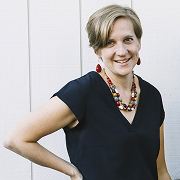If you’re a fundraiser or campaigner, you should find plenty of food for thought if you read between the lines of this recent NPR story, “Gamifying the system to create better behavior.” It certainly caught my attention when I heard it!
The story highlights the use of rewards to encourage specific behaviors (in this case, rewarding people for driving the speed limit by entering them into a contest to win a prize or encouraging people to lose weight by putting them on national TV), but they also address a hierarchy to rewards:
SAPS stands for Status, Access, Power and Stuff. Gabe Zichermann, the mind behind gamification theory, says those are things people want in their lives as rewards — in that order. “It turns out,” he says, “that cash isn’t that good of a reward. Status is a fantastic motivator for getting people to do stuff.”
Most fundraisers have a good deal of experience with that last one, stuff – in the form of premiums, but what can we do to incorporate the first two more?
A few thoughts to get you started:
- Look to convey status in your copy – what does being a donor to this organization say about that individual?
- Test naming different giving levels and invite donors to join that special group.
- Provide access by giving mid level donors the opportunity to participate in events alongside big name donors or join calls with important staff at the organization as they discuss strategy or the latest developments.
- Tie a campaign to a contest to meet a well-known person at the organization or a celebrity supporter.
- Get the most out of your premium by choosing one that conveys status (think logo-branded tote bags or other items that are similarly made to be seen and that broadcast something about the person using it).
- Offer a premium that conveys the donor’s giving level or status.
- Use social media to ask donors to broadcast their status as a donor – the simplest way is to ask someone who has just donated to post “I donated to [your organization]” on Facebook.
- Make your mid-level or potential mid-level donors feel important and valued by sending a highly personalized thank-you after they’ve made a gift.



